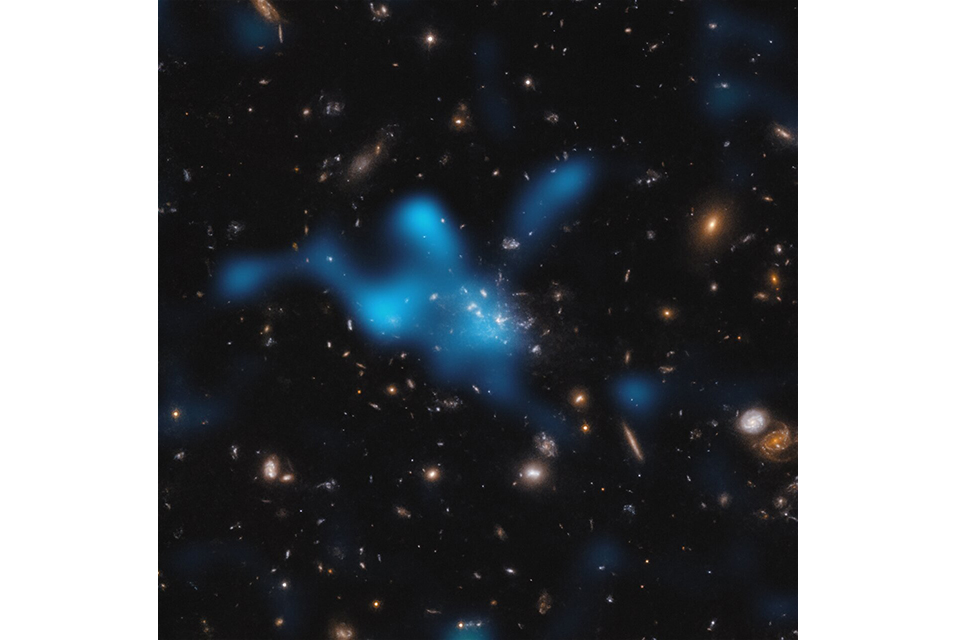INNSBRUCK.- Turbulence plays an essential role in weather and climate, and correctly representing its effects in numerical models is crucial for accurate weather forecasts and climate projections. However, the theory describing the effect of turbulence has not changed since its conception in 1950s, despite the fact that it is not representative for the majority of the Earth's land surface, especially over mountains and polar regions. The Innsbruck meteorologist Ivana Stiperski has now extended the turbulence theory to complex atmospheric conditions. The researcher thus paves the way for the first generalized turbulence theory over complex terrain.
Turbulence is the most important exchange mechanism between the Earth's surface and the overlying atmosphere. However, this mechanism remains one of the last great puzzles of classical physics and mathematics. Ivana Stiperski, head of the research group "Atmospheric Turbulence" at the Department of Atmospheric and Cryospheric Sciences at the
University of Innsbruck, has dedicated her work to the study of turbulence over mountains, and since 2020 her team has been working on the topic.
"Turbulence affects phenomena as diverse as climate, storm systems, air pollution and glacier melt. Accurate weather forecasts and climate predictions therefore require a precise description of turbulence, and over the complex terrain of mountainous regions this is particularly difficult as very little is known about how complex terrain modifies turbulence, and no major advance has happened over the past 70 years," Stiperski explains.
Until now, the understanding of atmospheric turbulence and how it is included in weather and climate models has been based on the so-called similarity theory, more specifically the "Monin-Obukhov similarity theory" first postulated in 1954. This decades-old theory of turbulence, however, assumes that the Earth's surface is flat and horizontally homogeneous (i.e., has uniform characteristics in the horizontal, such as for example infinite grasslands or corn fields), and therefore it is not representative for the majority of the Earth's land surface. This incorrect representation of turbulence adds uncertainty to weather prediction and climate projections.
Theory for complex terrain
The researcher's goal is to develop a generalized theory valid for all realistic atmospheric conditions—and a first major step in this direction has now been taken. "About 70% of the Earth's surface is characterized by a heterogeneous, mountainous structure, or what we call complex terrain, such as for example here in Tyrol. In our study, we use a unique ensemble of large measurement datasets and machine learning techniques to develop new similarity relations," Ivana Stiperski describes the approach in the study published in the journal Physical Review Letters, and highlighted as the Editor's Suggestion.
In her novel theory, the meteorologist includes a new key variable in the calculations. "In our novel approach, we include the so-called anisotropy, i.e., the information on how the energy in turbulence is distributed in different spatial directions. We show that this quantity, which has so far not been examined in light of similarity theory, encodes the information on complexity of the surface and flow conditions that drive turbulence, and therefore makes it possible to extend similarity theory to complex terrain. This is the first time that an approach has been successful in complex terrain, and it brings us closer to a unified theory of complex atmospheric turbulence."
The approach allows a more correct representation of turbulence effects in weather, climate and air pollution models. "This is particularly important for understanding and predicting weather and climate projections in mountainous and polar regions, since similarity theory routinely fails there. These regions are particularly vulnerable and already experiencing unprecedented warming under the global change, and a therefore a precise description of further developments is vital," emphasizes Ivana Stiperski.










